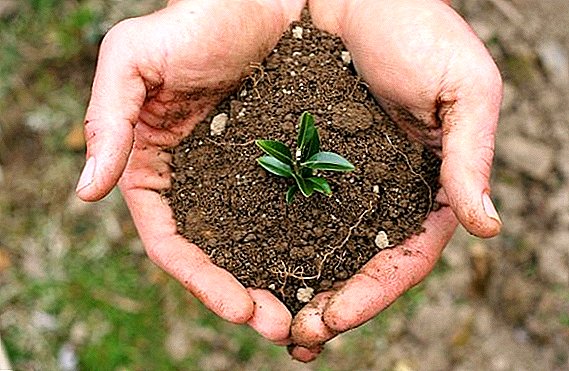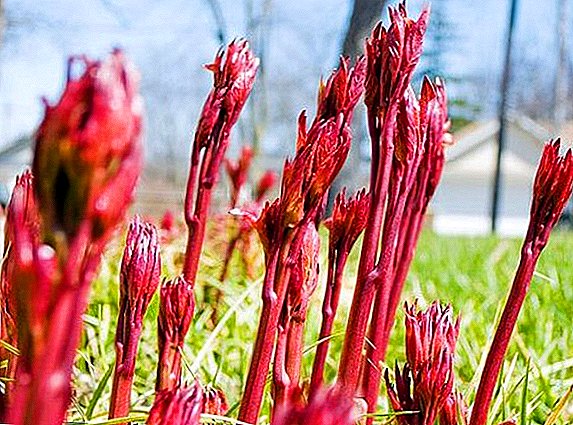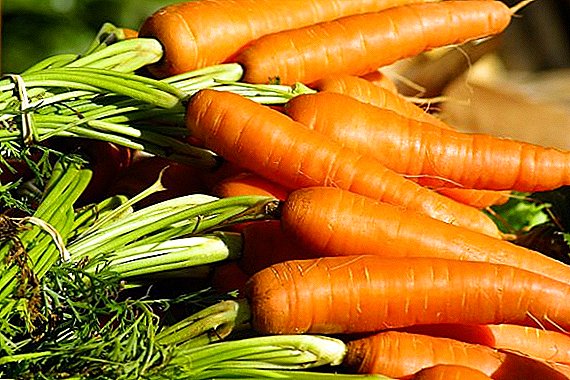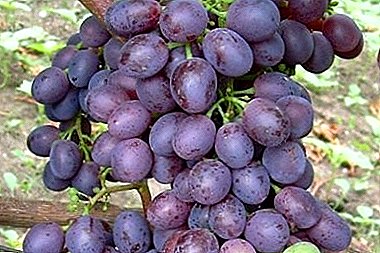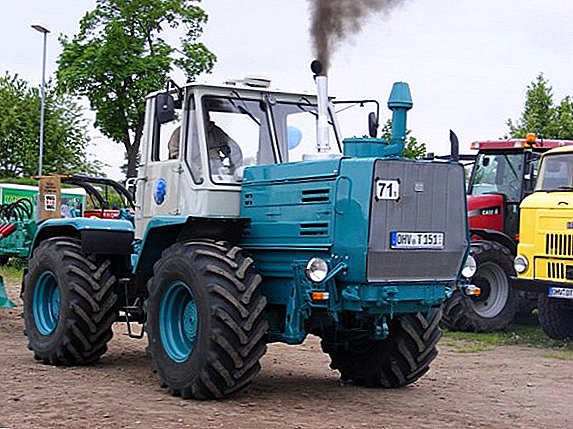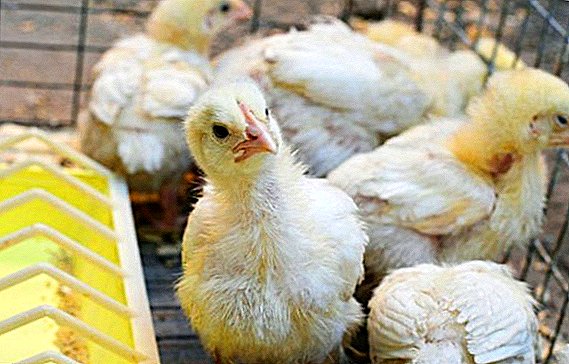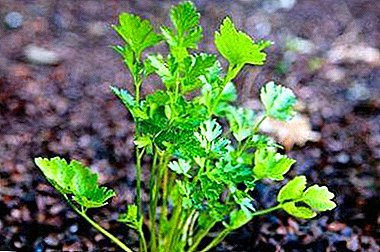
Growing conditions are an important component for the successful cultivation of vegetables. Common vitamin parsley is no exception.
Particularly affects the quality of the harvest in the future the choice of the right site for planting this green.
In our article we will tell you exactly where to plant the plant on the site in order to get a good harvest, as well as give useful recommendations for the care and cultivation.
Why is it important to choose a landing site correctly?
It is necessary to determine the plot for sowing parsley. Many vegetable growers note unpretentiousness of greenery, but still culture is demanding on soil moisture, friability, fertility.
The chosen place for parsley planting affects the following components:
- root system development;
- the formation of lush foliage;
- yield;
- taste of greens;
- ripening period;
- degree of soil depletion;
- thorough care of landings.
Illiteracy in sowing can result in small, poor quality crops with huge costs associated with growing greens.
Where is it better to plant a plant? When planting on very wet areas, in places where groundwater is located close, parsley is damaged by powdery mildew, dry black rot, rust, damaged by slugs and aphids.
Plant roots on heavy soils with a dense structure will be deformed. Viscous, oily, dense soil slows the vegetation process of vegetables. Cultures will develop poorly in the lowlands with low light.
Seedlings are affected by pests in the beds where carrots, cumin, dill and cilantro were harvested. Root varieties will branch heavily if fresh manure was introduced into the ground before planting. The presence of weed crops will impede the growth of seedlings.
Where is it better to sow - in the shade or in the sun?
 Greens are very light-loving. Parsley grows well in well-lit areas, but the penumbra is not afraid of it. For example, a good harvest can be harvested by growing crops in beds shaded by maize crops.
Greens are very light-loving. Parsley grows well in well-lit areas, but the penumbra is not afraid of it. For example, a good harvest can be harvested by growing crops in beds shaded by maize crops.
The most effective are planting in sunny areas. Crops planted in the penumbra, emerge later.
In winter, cultivating greens in greenhouse conditions with a short daylight level, it is necessary to provide artificial additional lighting for plants. Where to plant parsley in home-grown conditions? Home planting is best placed on window sills from the south and south-west side, for good culture development, it is necessary in the winter for 13-16 hours a day with powerful lamps (40 V), otherwise the green will stretch a lot and will give very few succulent leaves.
Requirements for the site for growing
Greens are cultivated in open rows, and at home. At the same time, the requirements for the landing site are not significant, but they are still different.
Houses
Boxes filled with soil half with sand. Suitable soil from a vegetable garden or a special mixture purchased in the store. The soil is watered with warm water, tamped down, small grooves are made in size, where the seeds will be placed, deepening by 0.5 cm.
The soil in containers should always remain slightly wet. To prevent a crust from forming on the surface, the ground is covered with a loose earth layer of 2 cm. The room temperature is maintained at 16-20 degrees Celsius. The landing area is additionally illuminated with powerful (40 V) fluorescent lamps, which are placed approximately 60 cm from the parsley seedlings container.
In the open ground
The beds for planting on the site should be well lit, not blown by strong winds, not subjected to flooding. Take into account crop rotation. Choose those places where such vegetables used to grow:
- tomatoes;
- garlic;
- cucumbers;
- bow;
- early cabbage varieties.
In areas of harvesting carrots, coriander, cumin, fennel planting is not carried out. For planting choose flat terrain. For the distillation of early greens use the slopes from the south or southeast side.
Root varieties are planted in places where crops - predecessors were fertilized last season with manure. This is a distinctive feature of the site selection for this type of parsley. But for leaf varieties, soil with fresh manure is needed. Nearby should be located a source that can be used for watering plants.
How to prepare it?
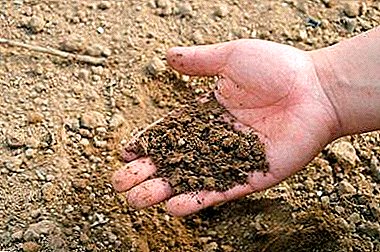 The plot begins to dig in the autumn. After harvesting the crop - the predecessor, the soil is fertilized. Under the future planting root parsley make manure, for leaf varieties use fertilizers (mineral and organic). Beforehand, it is necessary to dig up the soil at a depth of 25 cm and level it well.
The plot begins to dig in the autumn. After harvesting the crop - the predecessor, the soil is fertilized. Under the future planting root parsley make manure, for leaf varieties use fertilizers (mineral and organic). Beforehand, it is necessary to dig up the soil at a depth of 25 cm and level it well.- In the dug-up beds for root parsley, they must make 2 cm of grooves, between rows must be 20 cm each.
- The ground should be loose and moderately fertile so that the germination of planting material is not hampered. For a more porous structure, sand with dry humus is introduced into the soil. Digging up the site in the fall, bring organic matter (3-4 kg / sq. Meter). From early spring, the site is already fertilized in a complex way, adding substances:
- superphosphates (15 g / sq. meter);
- potassium chloride (20 g / sq. meter);
- saltpeter (enough 20 g / sq. meter).
- When the ground is completely thawed, it is loosened to a depth of 10 to 16 cm.
- Approximately 7 days before the spring planting the beds are covered with a film, this ensures the germination of weeds. Then the shelter is removed. Weed sprouting weeds. Thanks to this technique with a film, seedlings will be able to climb, take root, and develop.
Recommendations for improving the soil
The soil structure is improved by digging to a depth of 25-30 cm. Enrich the soil in the fall, making mineral fertilizers. In the spring, potassium-phosphorus nutrients are used at the site. For better air permeability, it is necessary to loosen the rows between each abundant watering or rain.
Important! If groundwater is very close to the surface, it is necessary to build high beds for sowing parsley.
Clay soil can be improved by digging it up and adding sand. For parsley, a slightly acidic and neutral soil environment is more suitable. Too acidic soil can be neutralized using the following techniques:
- making wood ash (700 g per 1 sq. meter);
- use of lime (on average 300 g per 1 sq. meter);
- use of dolomite flour (600 g per 1 sq. meter).
It is necessary to carefully select the area for green crops, so that there are no problems with seed germination, poor development of sprouts, increase in costs for the care of seedlings.
Is it possible to transplant the plant to another place?
 When should a plant be transplanted to another place and can it be done? This is possible when parsley is cultivated in a seedling manner. Often, before the onset of winter, root varieties are transferred from a ground bed into containers on window sills or into greenhouses. Carry out the procedure in cool weather:
When should a plant be transplanted to another place and can it be done? This is possible when parsley is cultivated in a seedling manner. Often, before the onset of winter, root varieties are transferred from a ground bed into containers on window sills or into greenhouses. Carry out the procedure in cool weather:
- They dig up parsley with a large lump of earth, transfer it to a house in a cool dark place to adapt, and at the same time sprinkle it moderately. When planting in a pot, crops are not deeply buried so that it will not rot.
- After a few days, transfer the pots to the heat, begin to water abundantly. In case of cloudy weather, it is necessary to arrange additional lighting for plants.
Transplanting parsley from one bed to another, do not shake off the earthy clumps from crops. Do not forget about the abundant irrigation.
Competently chosen plot for planting is a guarantee of a good harvest of parsley. Juicy greens can be grown, taking into account the conditions of fertility, moisture, acidity, soil structure, rules of crop rotation, high-quality preparation of the site for crops.


 The plot begins to dig in the autumn. After harvesting the crop - the predecessor, the soil is fertilized. Under the future planting root parsley make manure, for leaf varieties use fertilizers (mineral and organic). Beforehand, it is necessary to dig up the soil at a depth of 25 cm and level it well.
The plot begins to dig in the autumn. After harvesting the crop - the predecessor, the soil is fertilized. Under the future planting root parsley make manure, for leaf varieties use fertilizers (mineral and organic). Beforehand, it is necessary to dig up the soil at a depth of 25 cm and level it well.

